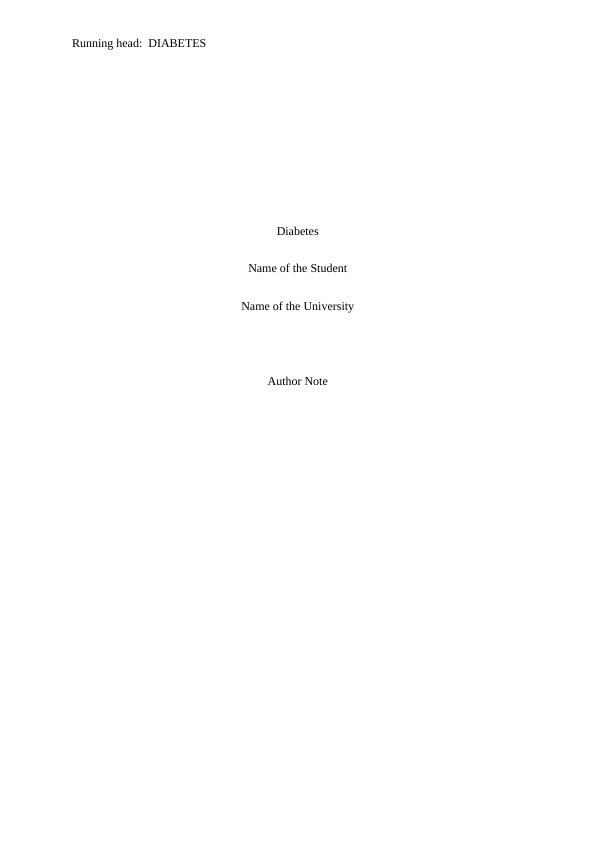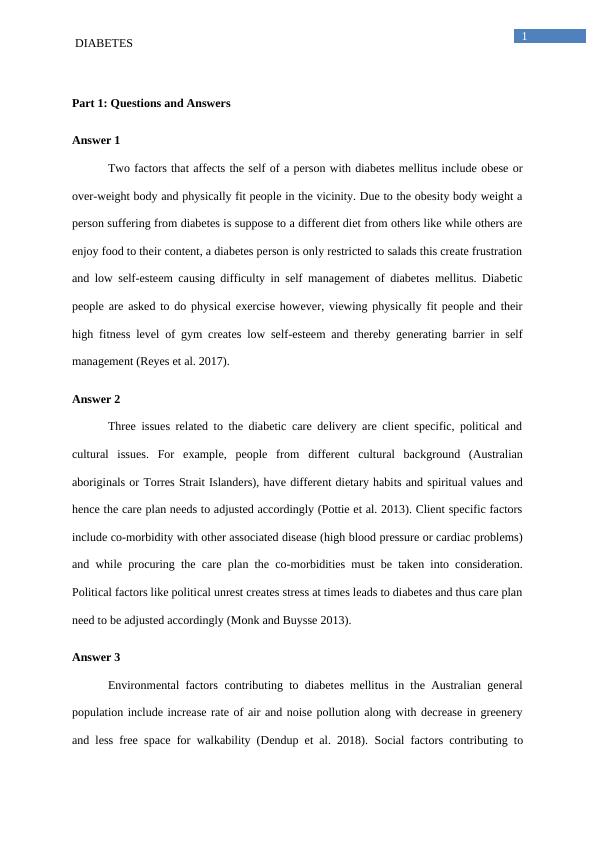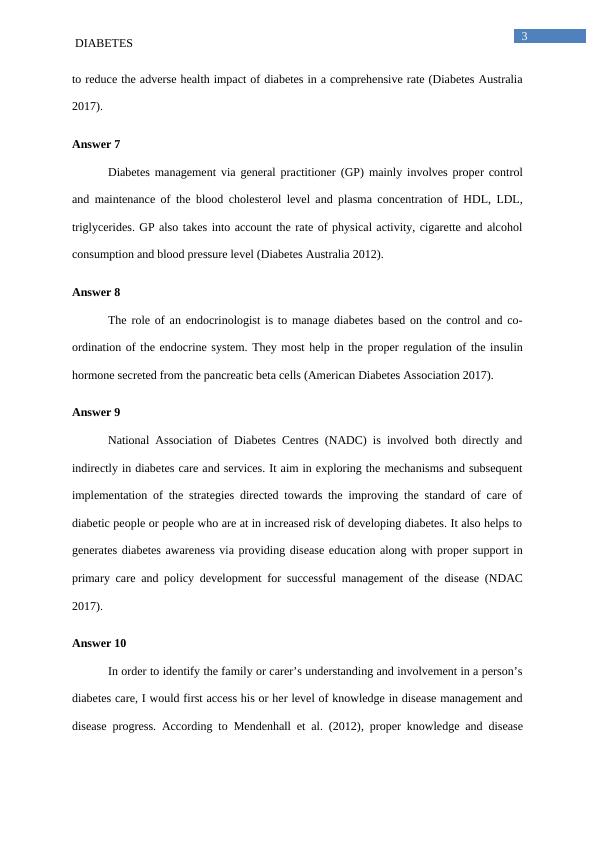Anatomy and Physiology of Diabetes Mellitus: A Comprehensive Overview
Identify factors affecting self esteem in people with diabetes mellitus and describe their impact on self management. Also, describe issues related to diabetes care delivery and services, environmental and social factors contributing to diabetes in the Australian population, factors contributing to higher rates of diabetes in Aboriginal and/or Torres Strait Islander people, significance of NDSS and Diabetes Australia, role of General Practitioners, endocrinologists, and NADC in diabetes care.
Added on 2023-06-10
About This Document
Anatomy and Physiology of Diabetes Mellitus: A Comprehensive Overview
Identify factors affecting self esteem in people with diabetes mellitus and describe their impact on self management. Also, describe issues related to diabetes care delivery and services, environmental and social factors contributing to diabetes in the Australian population, factors contributing to higher rates of diabetes in Aboriginal and/or Torres Strait Islander people, significance of NDSS and Diabetes Australia, role of General Practitioners, endocrinologists, and NADC in diabetes care.
Added on 2023-06-10
End of preview
Want to access all the pages? Upload your documents or become a member.




